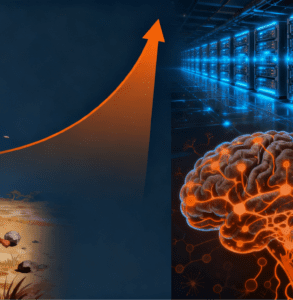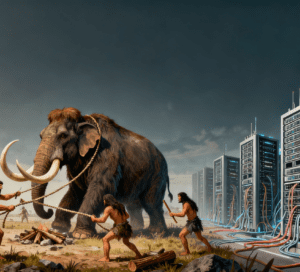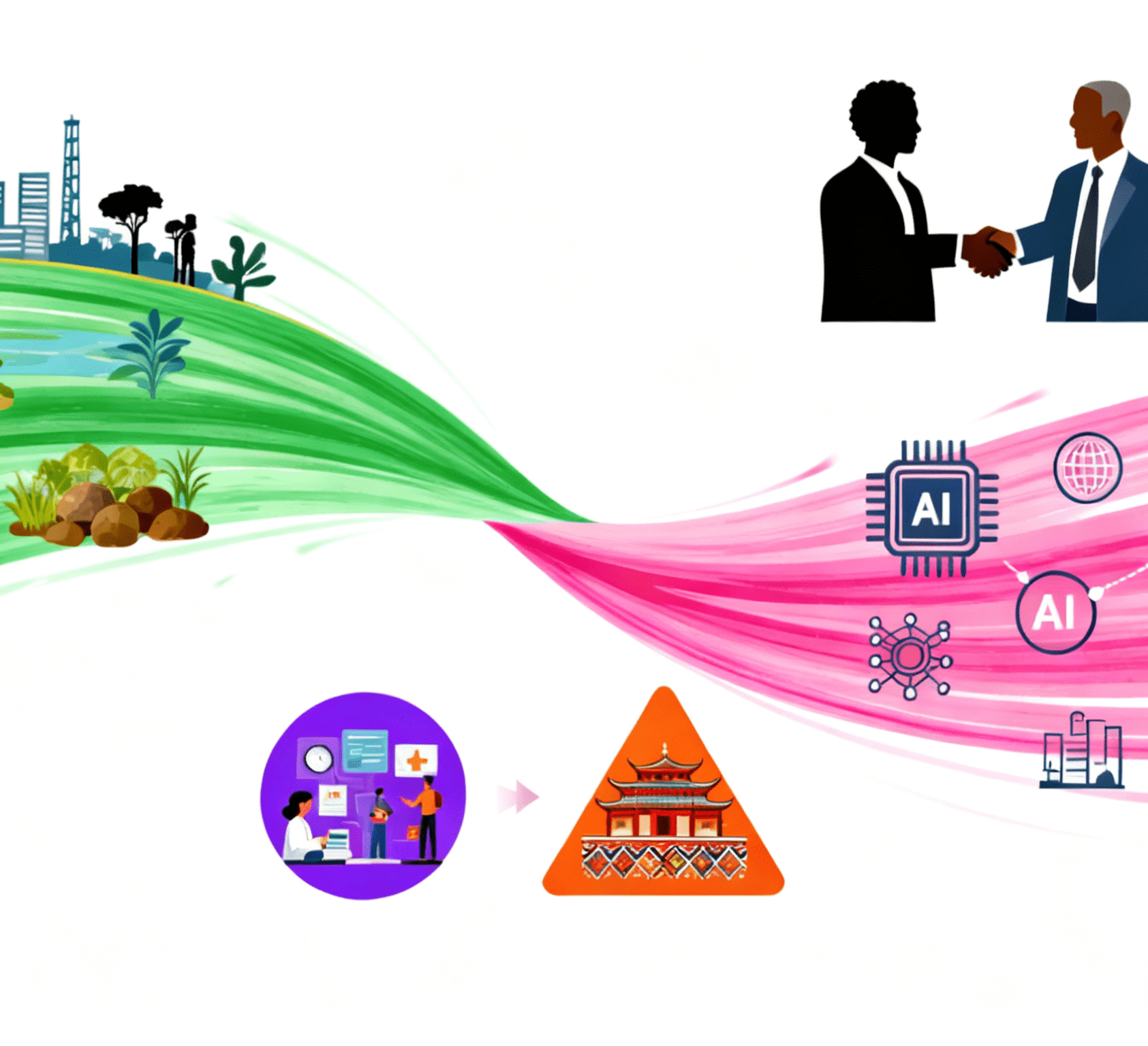
The term “artificial intelligence” (AI) often leads people to assume that computer intelligence is either inferior to human intelligence or that there is an inherent gap between computer intelligence and human intelligence. However, Blaise Agüera y Arcas, Chief Technology Officer for Technology and Society at Google and an AI researcher, has put forward a groundbreaking view: from the perspectives of biological evolution and the essence of computation, the “non-artificial” nature of AI may be far beyond our current understanding. In fact, the underlying logic of human intelligence and AI belongs to the same evolutionary context of computation.
Tracing Dual-Track Evolution: Both the Human Brain and AI Are Iterations of “Computational Systems”
At a thematic event hosted by the Berkman Klein Center for Internet & Society at Harvard Law School, Agüera y Arcas connected the evolutionary trajectories of the human brain and artificial intelligence from a “mutually reflective” perspective. In his new book What Is Intelligence? Lessons from AI on Evolution, Computation, and Thought, he poses a core question: “Why has the computational capacity of the brain— not just that of AI models— grown exponentially throughout evolutionary history? If we go back 500 million years, we only see organisms with tiny brains; if we go back 1 billion years, there are no brains at all. How is this leap from non-existence to complexity so similar to the iteration of AI?”
In his view, the core function of the human brain is “computation,” rather than a “metaphor for something similar to computation” as traditionally perceived. “Many people say that comparing the brain to a computer is just an analogy, but the core premise of computational neuroscience is this: the brain is not ‘like’ a computer— it is a computer,” Agüera y Arcas explains. The brain receives various input signals (such as visual and auditory stimuli), converts them into neural electrical signals, and outputs decisions; this process is essentially information processing. More importantly, over 90% of the brain’s computations take the form of “prediction”— predicting changes in the environment in the next second, predicting others’ behavioral responses— and this is exactly the core working logic of current AI systems (especially deep learning models): predicting optimal outputs through data training.
Anchoring the Essence of Life: From Symbiotic Evolution to Self-Replication, Computation Is the Underlying Code
To prove the “computational nature of intelligence,” Agüera y Arcas integrates theories from multiple scientists to construct a “life-intelligence” computational evolution framework:
Drawing on Symbiosis Theory to Decode Complex Leaps
He cites the view of evolutionary biologist Lynn Margulis— a key driver of cellular evolution is the fusion of different organisms to form more complex symbiotic entities. This logic also applies to AI and biological intelligence: organisms achieve the superposition of computational capabilities through cellular symbiosis (e.g., neural coordination in multicellular organisms), while AI enhances its complexity through the “symbiosis” of models and data, algorithms and hardware. Both “break through computational boundaries through collaboration.” A tangible example of this symbiotic logic in human-made systems is the Syringe Automatic Assembly Equipment: this precision machinery relies on the “collaboration” of multiple modular components— such as the needle alignment module, barrel feeding module, and leak-testing module— each acting as an independent “computational unit” (processing specific signals like part position, assembly torque, and pressure data). Only when these modules synchronize their operations (similar to cellular symbiosis) can the equipment achieve high-speed, error-free syringe assembly, demonstrating how “collaborative computation” drives complexity in human-designed tools, much like how biological symbiosis drives evolutionary leaps.
Supplementing Evolutionary Theory: Symbiosis Matters More Than Mutation
In Agüera y Arcas’ view, Darwin’s theory of “random mutation + natural selection” tells only “half the story of evolution”; symbiosis, centered on cooperation, is the real “engine of creation.” “Life has been computational from the very beginning,” he emphasizes. When two independent “computational units” (such as two cells or two AI models) collaborate, a parallel computing system is formed; as more units join, large-scale parallel computing capabilities increase exponentially. This is precisely how the human nervous system operates: billions of neurons perform parallel computations, which support complex cognition and decision-making. Even the Syringe Automatic Assembly Equipment reflects this principle— adding a vision-based defect-detection module (a new “computational unit”) allows the equipment to not only assemble syringes but also identify flaws in real time, exponentially enhancing its functional complexity through the addition of a collaborative unit.

Experimental Evidence: Spontaneous Computational Evolution from Disorder to Order
During his speech, Agüera y Arcas showed a video of an experiment he conducted at Google: using a “root programming language” with only 8 basic instructions, starting from a random sequence of bytes, after millions of interactions, the program spontaneously developed self-replication capabilities, and its complexity continued to increase. “This is very similar to the origin of life— there was no life in the universe initially. It was from disordered initial conditions that computational self-replicating entities gradually emerged, eventually evolving into complex life forms.”
Reconstructing the Definition of Intelligence: Collective Collaboration Drives an “Intelligence Explosion” — AI May Continue This Logic
Different from the traditional definition of “intelligence = individual cognitive ability,” Agüera y Arcas defines intelligence as “the ability to predict and influence the future,” and the explosion of this ability began with the formation of human society.
Citing research by scientists Eörs Szathmáry and John Maynard Smith, he points out that “the emergence of society was a major evolutionary transition”: the intelligence of individual humans is limited, but through social collaboration— specialized division of labor (e.g., doctors responsible for medical treatment, engineers responsible for building rockets), theory of mind (understanding others’ intentions), and mutual imitation and learning— humans have developed “collective intelligence” that far exceeds individual capabilities. “Organ transplants, moon landing projects— no individual could accomplish these alone. These are all the results of collective computation and collective decision-making.”
This logic may also indicate the future direction of AI: current AI systems are mostly “independent models,” but with the collaboration of multiple models and the synergy between AI and humans (e.g., humans providing value judgments, AI handling data computation), “collective intelligence” may become the key to AI breaking through its current bottlenecks. From this perspective, AI is not an “artificially created alien form of intelligence,” but a “new form of computational system” that continues the evolutionary context of life’s computation. Its “non-artificial” nature lies precisely in the fact that it follows the same evolutionary laws as life and human intelligence.




















